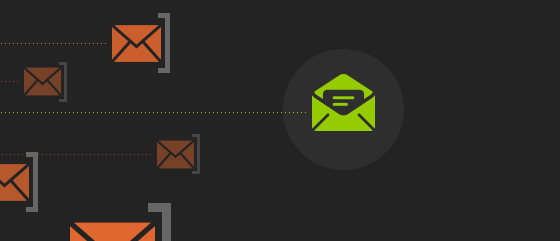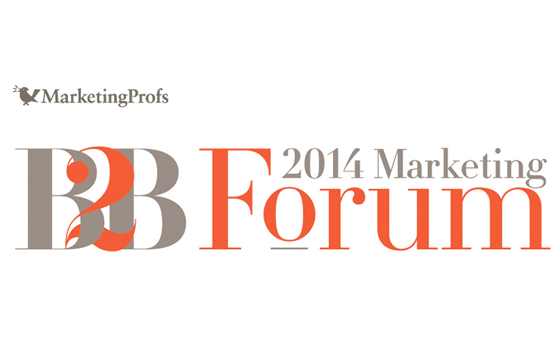Newfangled’s twenty-plus years working with expert firms has given us the opportunity to observe a number of patterns related to optimal metrics and benchmarks for successful lead development. And if you’ve followed our writing, you know we have a strong perspective related to an agency’s target prospect email list. Specifically, we’ve observed it’s best to have a minimum of 2,000 targeted prospects on your email marketing list. However, the average independent agency in North America only has approximately 500 people on its email list.
It’s best to grow your list organically. See our article on How to Get More Email Sign Ups for more insight into maximizing opt-ins. But as most firms have experienced, it takes years to organically build a list of 2,000+ email addresses, and not all of those signups are prospective clients.
We understand that purchasing a list is sometimes necessary for growing your list to the optimal volume of contacts in a reasonable time frame. This is also known as non-permission-based email marketing. The concept is to send an email message to a targeted audience of cold contacts in hopes of growing your list of qualified B2B leads. Because we realize this is a reality for most firms, we’ve outlined methods for effectively and safely marketing to a purchased list.
What to consider when purchasing an email marketing list
Start by narrowing your focus and nailing down your target personas. You should only purchase names that match the specific criteria you’ve outlined such as title, company, industry, state, city, marketing budget, company size, etc. Only select names that directly relate to your firm’s marketplace position. The more focused you are in their market, the more targeted of a list you can purchase and the more likely your content is to resonate with that list.
Once you’ve purchased the list, it’s very important to clean your list. Regardless of how reputable the provider, you can expect a 25% trash rate on a brand new list. Running your list through a cleanse helps ensure bad email addresses are removed prior to marketing to the list.
What to do with a purchased list
Now it’s time to start marketing to your purchased list. Ideally, you’d like to get the individuals on the list to opt-in prior to emailing them. How do you do that? You target the list via ads and send them to a conversion-optimized landing page.
Assuming you’re a service-based B2B company, your landing pages will typically promote an ebook, white paper or an article with a content upgrade. For B2B companies, we recommend using LinkedIn since you have the ability to upload the email list and target look-a-like audiences based on position and company criteria. However, you can also use Facebook, Twitter, Google AdWords and more.
Attracting these leads to signup on their own via ads is ideal because you won’t be able to nurture or even safely send to purchased lists without first establishing email deliverability. And it is impossible to establish deliverability sending solely to an unaware purchased list. This is because engagement is a very important email deliverability factor. Individuals from a purchased list are less likely to engage with your emails.
Email engagement by acquisition source
Although it’s logical that purchased leads are less likely to engage with your emails than leads generated online or via other more personal sources, we did some testing to verify. We first identified all leads that had not interacted with any emails or the website in over a year. We then sorted the inactive leads by lead source.
Inactive Leads by Lead Source
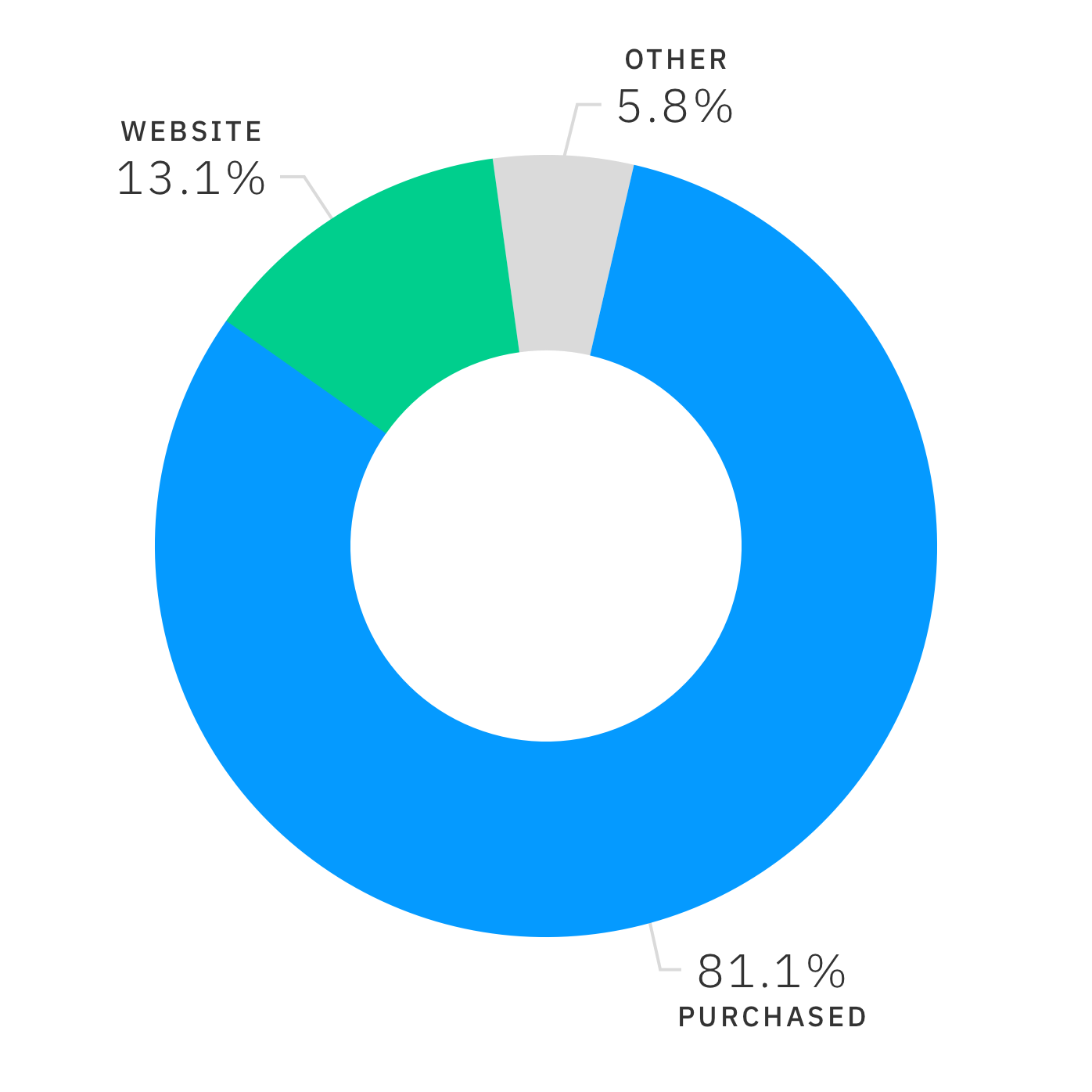
As you can see a majority – 81.1% of the inactive leads – came from a purchased list. Based on this chart alone, you’re probably thinking, why buy a purchased list? But we have more data, and this chart might surprise you.
Engaged Leads by Lead Source
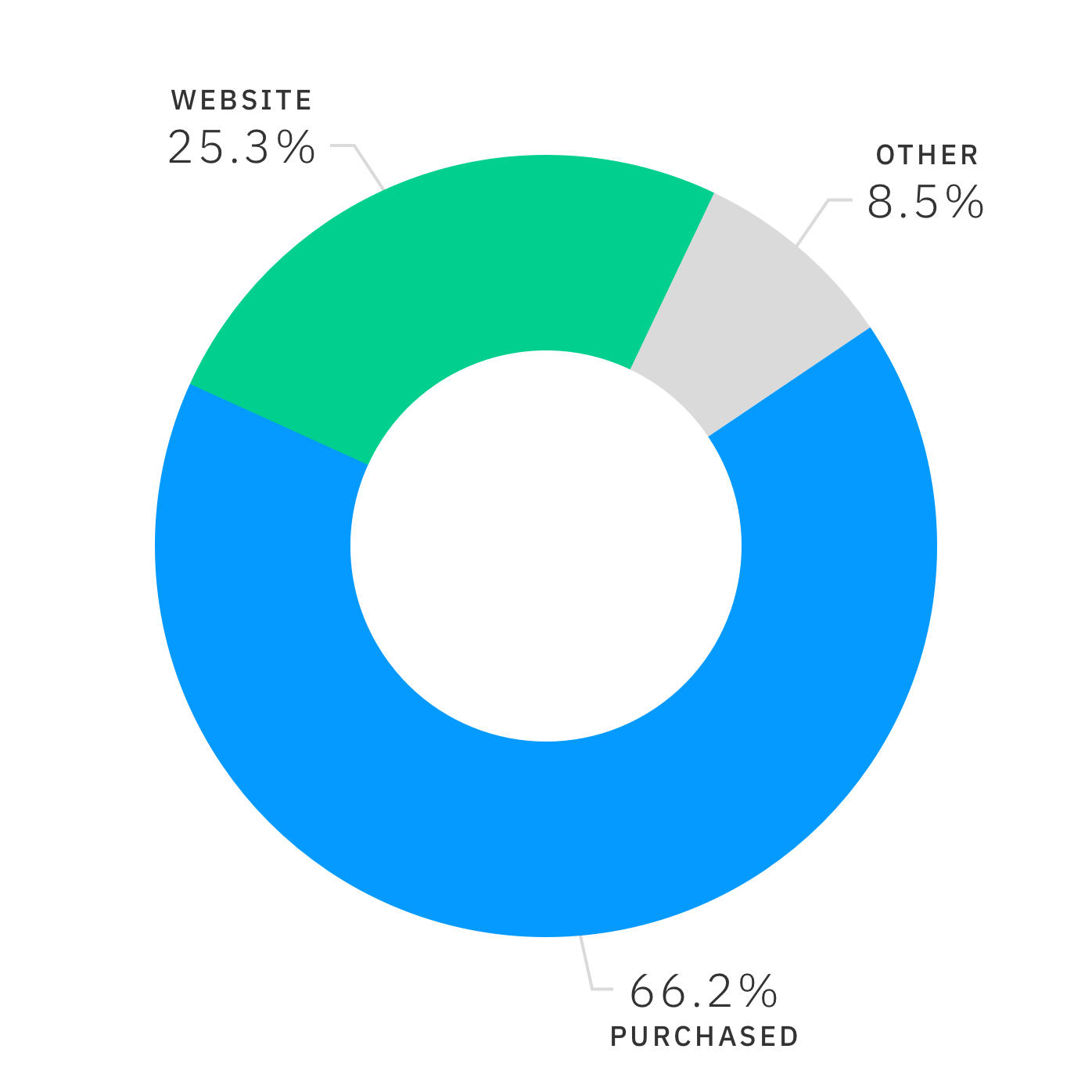
In addition to analyzing the inactive lead sources, we analyzed engaged leads by source and found that most of the engaged leads also came from purchased lists. Both of these charts make it clear that the list is made up of more purchased names than web signups.
Marketing list sources
For context, we also provided a chart displaying all leads by lead source. The size of this list is about 15,000 individuals. Contrary to popular opinion, this chart, along with the previous engagement chart, demonstrates that a targeted, engaged marketing list can contain and be largely made up of purchased leads. But there’s a way to build your list and integrate the purchased leads safely.
All Leads by Lead Source
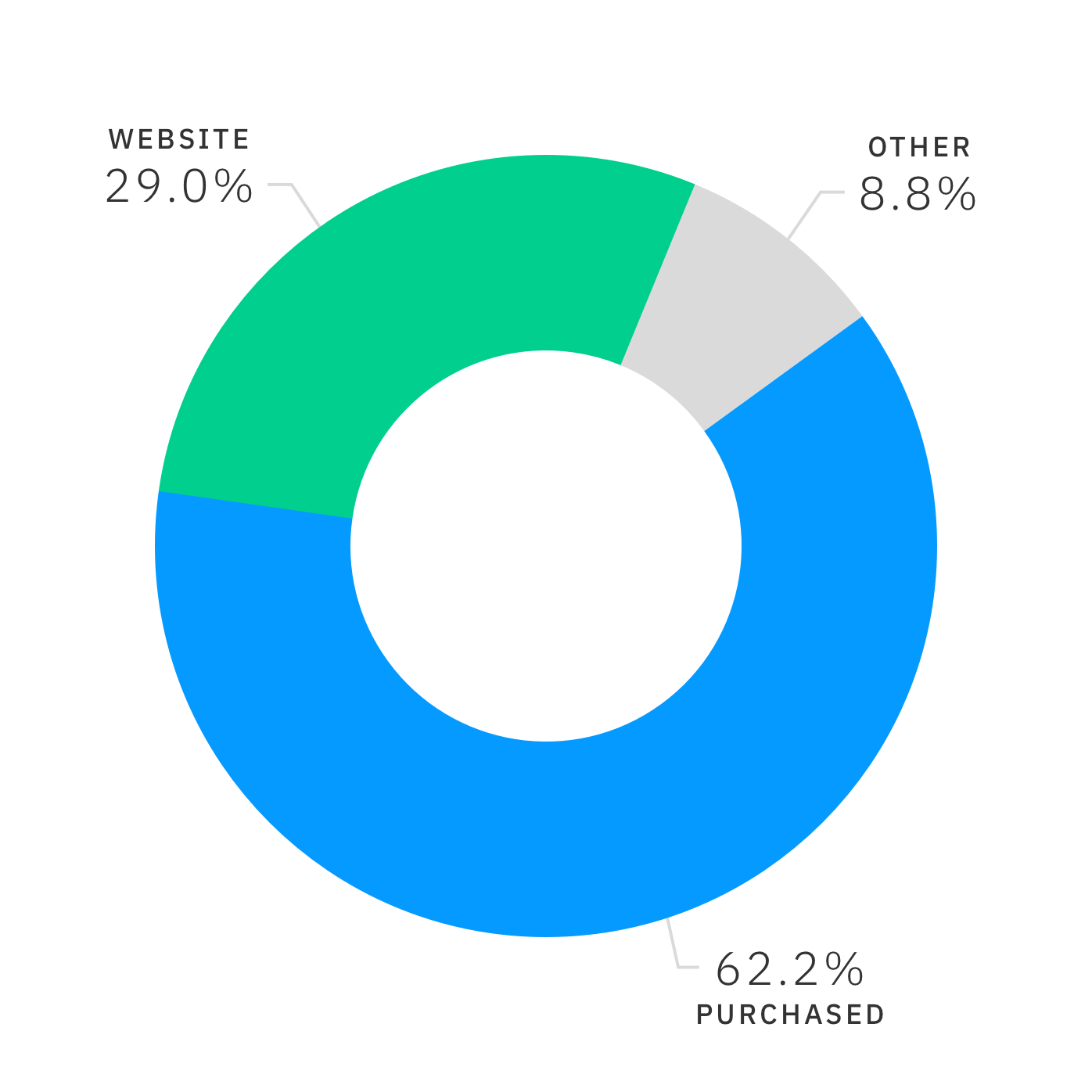
How to safely email to a purchased list
You need to first send to leads you’ve acquired organically either online, at tradeshows, etc. How recipients engage with your emails has a significant impact on how your emails are filtered and routed to inboxes. Therefore, you need to get engagement first, and you get engagement by sending helpful and relevant content. This does not include sales blasts!
From there, you’ll need to slowly fold in purchased names. We cover the ratio of engaged to cold leads that are safe to send to in our Step-by-step guide to maximizing inbox placement. But it’s also important to realize that if a purchased lead does not engage with your emails or website, they should be taken off your list. Continuing to send to unengaged contacts, regardless of their source, will hurt your reputation and deliverability. So be patient and think of this as an ongoing process.
How to write a cold email
A common mistake is to use this initial introductory email as a brochure of your firm’s services. It’s easy to alienate prospects with hard pitch promotional emails. However, people on this list can gain value from your expertise when demonstrated through thought leadership. Your content and emails should be aligned with the pain points of your prospects and the services you offer that address those challenges. Remember, your prospects are focusing on their day-to-day brand problems. Your content should too.
We’ve compiled a list of five suggestions based on best practices to optimize results.
- Take a personalized approach. For example, “Hello {First Name}, As the Marketing Director of _______ you may have experienced _______…” By using the contact’s first name and calling out their title or industry, the prospect knows this email was intended for them and is encouraged to continue reading.
- Keep the email relatively short; one or two paragraphs will typically do. We see a decline in click-through rates when the email exceeds two full paragraphs. Also, consider your tone. This email should not read as a marketing essay but instead as though it’s coming directly from one individual to another.
- Highlight a piece of relevant, expertise-based content aimed at the targeted prospects on your list. Do NOT send them to your home page. By sending a prospect to your home page, they will be overwhelmed with choices and will likely bounce. Your thought leadership is arguably the most valuable area of your website for lead development – don’t be afraid to send people directly to it.
- Send more than one email, but be sure to customize the second email based on recipient’s interactions with your initial email. For example, recipients who opened and clicked on your first email should receive a different message than recipients who never opened the initial email. Reaching out more than once is appropriate within reason. We’re not advocating for spamming your list with multiple emails a day or even within a week; however, sending two emails in 15 days or a month is simply giving your audience more opportunities to engage.
- A/B test the list to see which emails or content is resonating best with the purchased list. A/B testing allows you to test two slightly different emails to your audience so you can measure which email or content piece triggered the most engagement and then use the most effective email to send to the bulk of your purchased list.
It is not illegal to send emails to business contacts that you’ve never communicated with – or even those you don’t know as long as the email adheres to specific CAN-SPAM requirements. There are safe ways to market to and eventually email a purchased list, and it can be an effective method for growing a targeted marketing list. Ethical businesses use outbound email marketing to provide valuable solutions to highly-targeted, industry-related contacts. The key point to remember is that your message must provide true value to the recipient.
